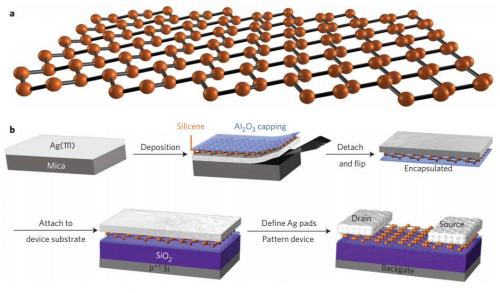
- The problem with silicene is that it is very difficult to make and even more difficult to work with once a sheet is at hand. It has been only eight years since physicist Lok Lew Yan Voon published theories about how silicene would perform, and since then, various groups have tried creating the material, most finding little to no success.
- To get the nanosheets to cooperate the researchers first grew some sheets of it on a very slim base of silver that had been topped with aluminum oxide. Once grown, the silicene sheet was peeled off its base and placed silver side up on a silicon dioxide wafer. The silver was then fashioned to make electrical contacts allowing the sheet to be used as a transistor.
- Though the team has technically created a transistor based on silicene, it is still not clear if such a process would be amendable to porting to a commercial application. Much more research will have to be done before that is determined. If it does work out, the team believes it would be easier to use silicene in future electronics than graphene, because so much of chip design is already silicon based.